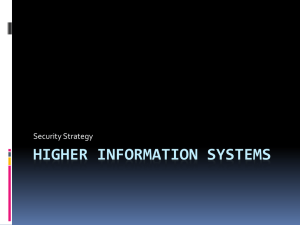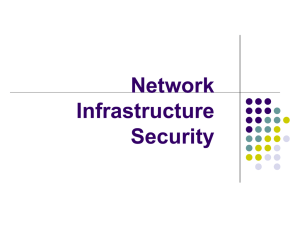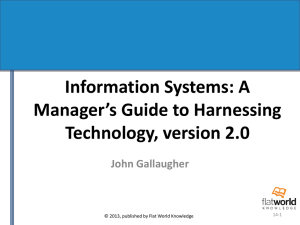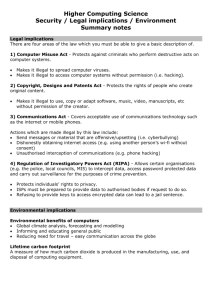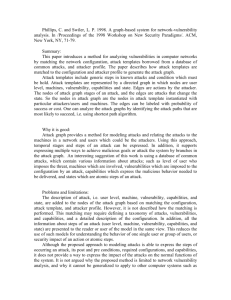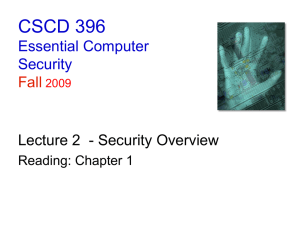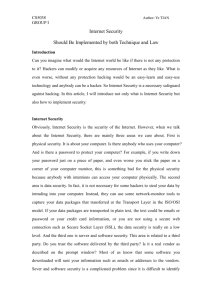security engineering
advertisement
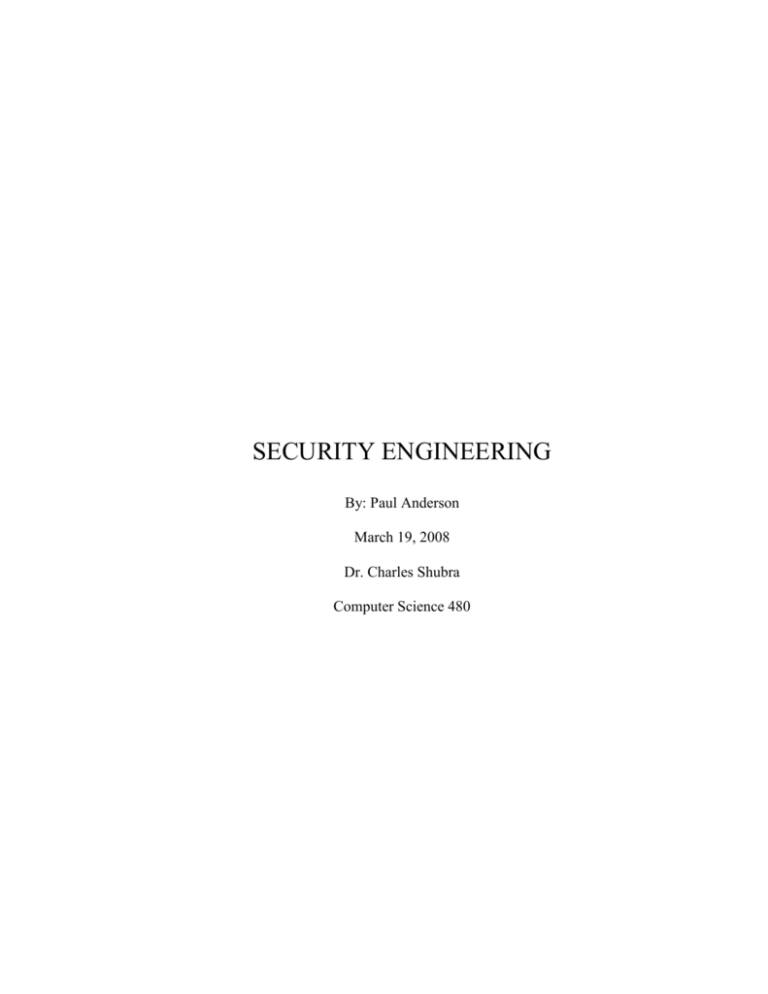
SECURITY ENGINEERING By: Paul Anderson March 19, 2008 Dr. Charles Shubra Computer Science 480 Due to the large widespread use of the internet in the 1990’s introduced a new challenge for software engineers-designing and implementing systems that were secure. With the more and more systems were connected to the internet, a variety of different external and internal attacks were devised to threaten these system. Security engineering is concerned with how to develop and maintain system or its data. Security engineering is part of the more general field of computer security. This is become a priority for businesses and individuals as more and more criminal try to exploit network system for illegal purpose. The majority of attacks focus on system infrastructures because the components (e.g. web browsers) are well known and widely available. In this reaction paper I will give an overview of the articles (On the Anatomy of Human Hacking and A Basic Firewall Configuration Strategy for the Protection of Development- related Computer Networks and Sub networks) and Ian Sommerville (Software Engineering book). Then ask the questions which we weren’t able to answer at the end of class. The first article “On the Anatomy of Human Hacking” was from Information Security Journal: A global perspective. This article just mainly covers the area of social engineering and how a hacker can use human manipulation to gain access to systems or its data. This kind of hacking has impacted the technology field greatly because these techniques are widely used to infiltrate networks using the so called “weak link” of the group. The weak link is normally someone who is unsuspected and completely ignorant to the security policies of the company or firm. This article also gives strategies for developing and implementing a successful information security awareness programs. With a policy in placed this will lower the risks of an employee being exploited in relation to protecting the information asset. The second article “A Basic Firewall Configuration Strategy for the Protection of Development- related Computer Networks and Sub networks” was from the Information Security Journal: A global perspective. While developing new software, the developers must implement security features such as username and password, security locks, firewalls and bio-tech. In this article they discuss how important the basic configuration of a firewall, when it protects a network of computers. From this article they developed a case study in which was based on four different modules containing one or more sections: environmental, forward rules, allow ping, and post-routing rules. Ian Sommerville’s book Software Engineering Concepts gave the general outline of security engineering, from the security concepts to the deployment of the software. The first step Sommerville discuss was the security concepts, such as; Asset, Exposure, Vulnerability, Attack, Threats and Control. Asset A system resource that has a value and has to be protected Exposure The possible loss or harm that could result from a successful attack Vulnerability A weakness in a computer-based system that may be exploited to cause loss or harm Attack An exploitation of a system’s vulnerability Threats Circumstances that have potential to cause loss or harm Control A protective measure that reduces a system’s vulnerability The second step which he discusses was security risk management. When developing new software its best before deployment you test it against types of attacks which may occur. For example, a hacker breaks in a change/corrupt data files. That is a risk which the developers must test and make a recovery plan. There are two types of risk management: Preliminary and Life-cycle risk assessment. After the risk management is complete the next step is to Design for Security. The design of the software is a crucial step because you have to think about the security of each of the components which makes up the system. The architectural design should complement the security of the system with consideration to protection and distribution. Sommerville gives a basic overview the general design guidelines that have wide applicability when designing system security solutions and which encapsulate good design for a secure system. Finally, System Survivability is the final step to security engineering. In this step they do the intense testing (system understanding, critical service identification, attack simulation and the survivability analysis). 1. Why do corporations put confidential information on internet-enabled computers? The corporations don’t really put confidential information on internet-enabled computers. The information is stored on secure database or servers. The computers/workstation within the network is just able to access the internet and the data. But some corporations only give the employees the ability to access limited or certain sites. 2. What part is easier to protect against physical or software based attacks? Each one as its own advantages, but if I was suppose to choose, I would choose physical. When it comes to the physical security we could place more physical barriers, such as: cameras, locks, security clearance and etc. 3. What can be done to better secure electronic devices that we use everyday? Many things can be done to secure our electronic devices. For example, people could protect their physical private information (social security card, state id, bank and credit card statements, and other information) and to be more aware of their situation and who is around them. Overall, people just need to be more protective of there information and who they hand it out to. 4. As technology advance do you think things like cell phones will have a security engine? I do think there will need to be some type of security feature will be added on to cell phones. As technology advances the memory on the phones increase with their ability to access the internet, there is a possibility that they can be used for denial of service attacks. 5. Is key encryption through the use of matrices and multiplication and inverse still used today, if so is there any advances? Now, some software has there own algorithm which implements key encryption, so many of them are never the same. 6. What type of privacy mechanisms are being used in security engineering? RC5 for symmetric key encryption RSAREF 2.0 for the public/private key encryption 7. What industries or nations still use a methodology where customers are at fault for security failures? Do they spend more or less money on security related issues? I’m not really certain if companies or governments blame the customers for a security failure. Normally, the employee’s of the company would be responsible for security failures. Companies would normally put more money into there networks and security policy. 8. The appearance of a system as less secure than it actually is seems to be accepted as bad because it acts like a reverse deterrence. Could this perception actually be beneficial? In a real world example; a thief underestimates a bank’s security features and attempts to rob a bank. In the process he sets off an alarm and is caught. His capture reveals that he used some backdoor to the bank had not thought to protect. Could this also be applicable to a distributed system? Possibly acting as a sort of honey pot? Well that type of deterrence will not work out so well because if someone have a layout of your system or network they could possibly devise a plan which may easily crack your defenses. Not everybody view and take a problem in the same way. Now with your real world example is more gear towards the physical as aspect of the bank security feature. But either way physical or data that break in will more likely to send a message of we have to protect the information all around. If it can be open, then there is a threat. A company may produce a false copy of their system design, so that if someone does hack into the system they will make a mistake (which will set off an alarm).



